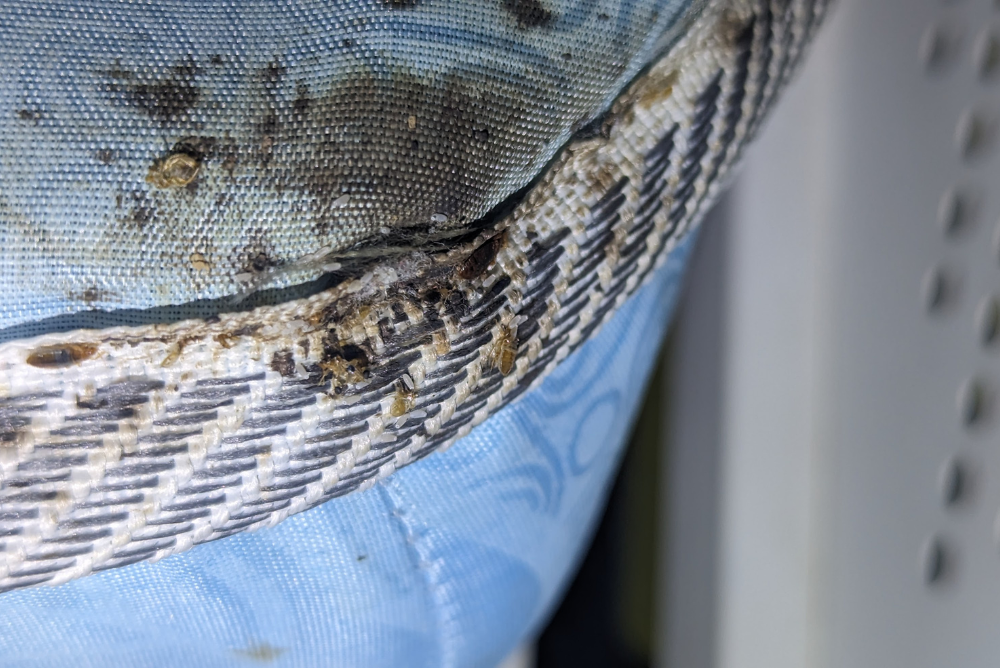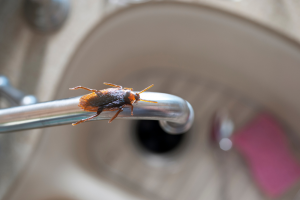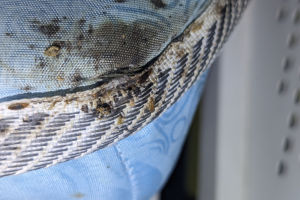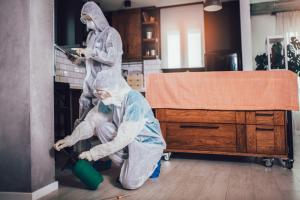Bed bugs are a common nuisance in many places around the world, and Singapore is no exception. These tiny, nocturnal insects can infest homes, hotels, and even workplaces, causing discomfort and distress. Understanding how to spot bed bugs, knowing their life cycle, and learning about effective treatments can help you take control of the situation before it becomes a bigger problem.
In this article, we’ll explore the signs of bed bug infestations, ways to prevent them, and the most effective treatments, including professional pest control services. With these insights, you’ll be well-equipped to manage bed bugs in Singapore and protect your home or business from their harmful effects.
What Are Bed Bugs?
Bed bugs are small, reddish-brown insects that feed on the blood of humans and animals. They are typically about 4-5mm long and can be easily mistaken for other types of pests. Bed bugs are notorious for their ability to hide in tiny cracks and crevices, making them difficult to spot until an infestation has already begun.
While bed bugs are not known to transmit diseases, their bites can cause itching, irritation, and discomfort. In severe cases, an infestation can lead to anxiety and sleep deprivation due to the constant fear of being bitten at night.
Signs of Bed Bugs in Singapore
Spotting the signs of bed bugs early is crucial to preventing a full-scale infestation. Here are some of the most common indicators that you might have bed bugs in your home or business:
1. Bed Bug Bites
Bed bug bites are one of the most obvious signs of an infestation. The bites typically appear in small, red, itchy spots that are often grouped together in a line or cluster. These bites are most commonly found on exposed areas of the body, such as the arms, legs, and face.
Unlike mosquito bites, bed bug bites are often painless at first but can become irritated and swollen after a few hours or days. The itching can become intense, leading to scratching, which can sometimes cause secondary infections.
2. Blood Stains on Bedding
Another common sign of bed bugs in Singapore is small blood stains on your sheets, pillowcases, or mattresses. This happens when bed bugs feed on your blood during the night. The insects often get crushed when you move in your sleep, leading to tiny blood spots on the fabric.
If you notice these stains on your bedding, it’s important to check for other signs of bed bugs and take immediate action to address the problem.
3. Dark Spots and Bed Bug Faeces
Bed bugs leave behind dark spots of excrement, which can often be found along the seams of your mattress, in cracks of furniture, or in hidden areas like behind baseboards. These dark spots are usually small, about the size of a pinhead, and are a clear indication of an active infestation.
In addition to dark spots, you may also notice a musty, sweet odour. This scent is produced by the bed bugs’ scent glands and is a telltale sign of a significant infestation.
4. Shed Skin and Egg Shells
Bed bugs go through several stages in their life cycle, and as they grow, they shed their skin. You may find these discarded exoskeletons in areas where bed bugs are hiding, such as cracks, crevices, or behind furniture. The shed skin is typically light brown and translucent, and it may resemble the shape of a bed bug.
In addition to shed skins, you might also spot tiny, white egg shells. These are the remnants of eggs that have hatched and are typically found in areas where bed bugs have been laying eggs, such as in cracks or around the edges of your bed.
5. Visible Bed Bugs
In the worst-case scenario, you may actually see bed bugs with your own eyes. Although they are nocturnal creatures, bed bugs do come out to feed during the night. If you wake up in the middle of the night and spot a bed bug on your bed or mattress, it’s time to take action immediately.
How To Get Rid Of Bedbugs?
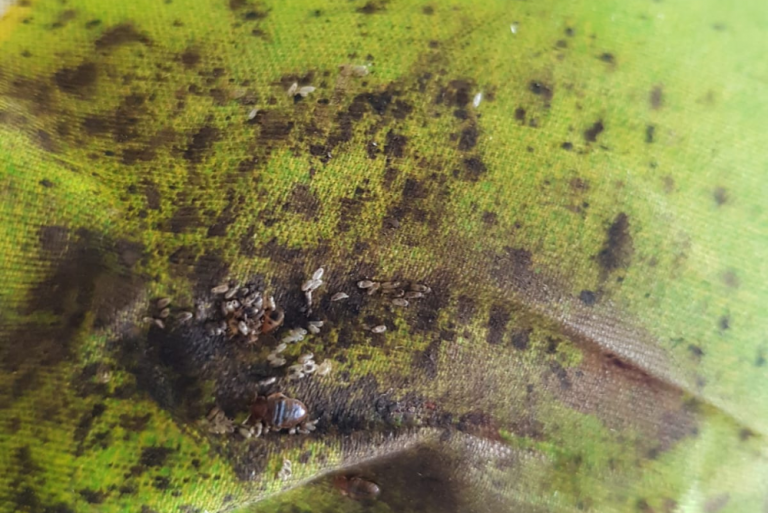
Understanding the life cycle of bed bugs is crucial in identifying and managing an infestation. Bed bugs go through several stages in their life cycle:
- Eggs: Bed bugs start their life as tiny, pearly white eggs that are about the size of a pinhead. These eggs are usually laid in cracks and crevices near where humans sleep. A single female bed bug can lay up to five eggs per day, resulting in hundreds of eggs over the course of her life.
- Nymphs: Once the eggs hatch, they become nymphs. Nymphs are smaller versions of adult bed bugs, and they go through several molts as they grow. They must feed on blood to grow and eventually reach the adult stage.
- Adults: Adult bed bugs are the familiar reddish-brown insects that feed on human blood. They can live for several months without feeding, but they typically feed every 5-10 days. An adult female bed bug can lay up to 500 eggs in her lifetime.
The entire life cycle of a bed bug can take anywhere from a few weeks to several months, depending on environmental factors like temperature and food availability. Because bed bugs reproduce quickly, infestations can grow rapidly if not addressed early.
How to Prevent Bed Bugs in Singapore

Prevention is key when it comes to bed bugs. While it’s difficult to completely eliminate the risk of bed bugs, there are several steps you can take to reduce the likelihood of an infestation:
1. Inspect Used Furniture
Before bringing used furniture, mattresses, or appliances into your home, carefully inspect them for signs of bed bugs. Bed bugs can easily hitch a ride on second-hand furniture, so it’s important to examine all surfaces thoroughly.
2. Use Bed Bug-Proof Mattress Encasements
Investing in a high-quality, bed bug-proof mattress encasement can be a great preventative measure. These encasements cover your mattress entirely, preventing bed bugs from entering or escaping. They also trap any bed bugs that might already be inside, making it easier to identify and deal with the problem.
3. Keep Your Home Clean and Clutter-Free
Bed bugs love to hide in cluttered areas, so keeping your home tidy can make it harder for them to find hiding spots. Regularly vacuuming your floors, upholstered furniture, and baseboards can also help remove bed bugs, eggs, and faeces before they can multiply.
4. Seal Cracks and Crevices
Bed bugs are great at hiding in tiny cracks and crevices, so sealing these gaps can help prevent them from entering your home. Check around baseboards, window frames, and door frames, and fill any cracks with caulk or weatherstripping.
5. Be Cautious When Travelling
Bed bugs are often spread through travel. When staying in hotels or hostels, inspect the room for signs of bed bugs, especially around the mattress seams and behind headboards. Always keep your luggage off the floor and use a luggage rack when possible. When returning home, inspect your luggage carefully before bringing it inside.
Effective Treatments for Bed Bugs in Singapore

If you suspect you have a bed bug infestation, it’s crucial to act quickly. Here are some of the most effective treatments for eliminating bed bugs:
1. Heat Treatment
One of the most effective ways to kill bed bugs is through heat treatment. Bed bugs cannot survive at temperatures above 45°C (113°F), so professional pest control services often use heat treatments to eliminate bed bugs. This involves raising the temperature in your home to a level that kills all stages of the bed bug life cycle.
2. Chemical Treatments
Chemical treatments are also commonly used to control bed bugs. These insecticides are applied to cracks, crevices, and other areas where bed bugs hide. While chemical treatments can be effective, they should only be used by professionals to ensure safety and effectiveness.
3. Professional Pest Control Services
When dealing with a significant bed bug infestation, the best course of action is often to contact a professional pest control service. Experts like All Out Pest Control are trained to identify bed bug hiding spots, implement effective treatments, and provide long-term solutions. They can also advise you on preventative measures to reduce the likelihood of future infestations.
Frequently Asked Questions (FAQs)
Bed bugs typically spread through travel, such as staying in infested hotels or using second-hand furniture. They can also move between rooms in multi-unit buildings, making it easier for infestations to spread.
While bed bugs are not known to transmit diseases, their bites can cause itching, irritation, and allergic reactions in some people. In severe cases, constant scratching can lead to infections.
While DIY methods, like vacuuming and using over-the-counter insecticides, can help reduce the number of bed bugs, the most effective solution is usually to hire a professional pest control service. They have the expertise and tools to eliminate bed bugs effectively and prevent re-infestation.
Conclusion
Bed bugs in Singapore are a growing concern, but with the right knowledge and preventive measures, you can protect your home or business from an infestation. By understanding the signs of bed bugs, knowing how to prevent them, and using effective treatments like heat and chemical treatments, you can eliminate these pests before they cause significant harm. If you’re facing a severe infestation, don’t hesitate to reach out to professional pest control services to ensure a thorough and long-lasting solution.
For expert pest control services in Singapore, visit All Out Pest Control to learn more about how we can help you tackle bed bugs and other common pests.

